

ABC’s of Sake
About Sake
In Japan, the law defines “sake” as alcoholic beverages brewed with rice, rice koji , water, etc. Among sake, “Nihonshu,” or “Japanese sake,” are defined as those brewed in Japan only with ingredients from Japan. The designation “Nihonshu” is approved by the National Tax Agency of Japan as a geographical indication that can be used only for products from the designated area.

Nihonshu, made of rice as a principal food for Japanese people and water, constitute a long-inherited element of Japanese culture. At a brewery, rice grown in paddy fields meets with good water in the preparation process, which is followed by the long brewing process, resulting in Nihonshu. Nihonshu differ in aroma and flavor depending on the rice variety used and the brewing method. There are various ways of savoring Nihonshu, combining them with seasonal foods that nicely match them or enjoying them at different temperatures.
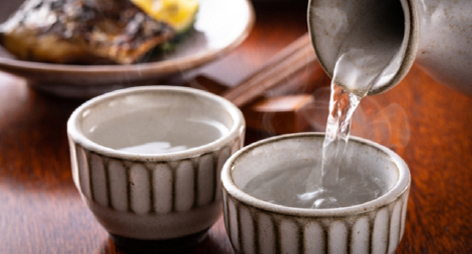
About Sake Rice
Ideal sake rice varieties
Among sake rice varieties used to brew sake, those especially suitable for sake brewing due to a white starch core in the center of each grain (called “shinpaku”) are called "Shuzo Koteki mai",ideal sake rice varieties. The shinpaku part of these varieties remains flawless after polishing, contributing to producing sake with a clear flavor. Ideal sake rice varieties are difficult to grow, and their cultivation requires very hard labor. Therefore, they are very rare rice varieties and carefully grown for sake brewing.

Yamadanishiki
Yamadanishiki is an ideal sake rice variety and called the “king of sake rice.” It has many properties ideal for all stages of sake brewing, such as a large shinpaku part, a low protein content, high water-absorbing quality, and great digestibility. This rice variety contributes to producing sake with an excellent aroma and a rich flavor.
Gohyakumangoku
Gohyakumangoku is an ideal sake rice variety named to celebrate the fact that the rice production volume of Niigata Prefecture, a famous rice production center, exceeded gohyakumangoku (five million koku, or approximately 750,000 tons). This rice variety contributes to producing sake with a clean and clear flavor. Many of the sake products using it feature a mild flavor with lasting appeal, nicely complementing various kinds of meals.
Rice Polishing Ratio
The rice polishing ratio is the percentage of the size of rice grains remaining after the outer surfaces of brown rice grains are shaved off. While the rice polishing ratio for edible rice is generally about 90%, that for rice used in sake brewing is mostly around 70%. A rice polishing ratio of 60% means that about 40% of each rice grain is removed. The lower the rice polishing ratio, the stronger the aroma and the clearer the flavor of sake. Meanwhile, the higher the rice polishing ratio, the fainter the aroma and the richer the rice taste in sake. In this way, the rice polishing ratio determines the aroma and flavor of sake.
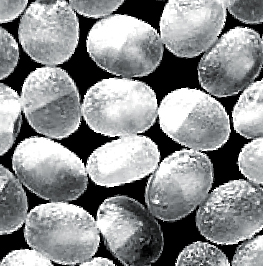
Flavor indicators
Sake Meter Value
The sake meter value (SMV) indicates the relative density of sake. A negative SMV means a high sugar content in sake, while a positive SMV means a low sugar content. This indicator suggests how sweet or dry a particular sake tastes.
Acidity
Acidity is an indicator for the level of acid in sake. Since acid adds a sharp flavor to sake, sake with high acidity tastes relatively dry.
About Sake Brewing
Brewing water
Brewing water denotes water used in the sake production process. Since sake contains about 80% water, the quality of finished sake depends greatly on the selection of water. While sake made using hard water is characterized by a unique clear and sharp mouthfeel, sake made using soft water has a mellow mouthfeel. Among brewing water from various places, Miyamizu from Nada, Hyogo, is famous hard water, and Fushimizu from Fushimi, Kyoto, is famous soft water.

Miyamizu Water suitable for sake brewing
Miyamizu is hard water with a favorable mineral content for facilitating the growth of koji and yeast. It is said that this high-quality water contributed to the great fame of sake from Nada thanks to its extremely low content of iron, which can deteriorate the color, flavor, and aroma of sake.
Fushimizu Water suitable for sake brewing
Meanwhile, Fushimizu is soft water with a favorable mineral content. Fushimi, Kyoto, is abundant in high-quality natural riverbed groundwater, as suggested by the fact that its name is sometimes written with the same kanji characters as the water name “Fushimizu.” It is said that Fushimi’s presence as a representative sake production center owes much to this soft water.
Koji
Koji is steamed rice on which koji mold (aspergilli) grows. In koji, starch in the rice is converted to sugar, and protein in the rice is turned into amino acids. Therefore, koji brings out the good flavor of sake. koji is the basis for the qualities of sake.
Moromi (Main mash)
Moromi (main mash) is a mixture of shubo (the yeast starter), koji, steamed rice, and water under fermentation. It is a kind of original state of sake, since sake is a finished product made by filtering moromi.
Shubo,mother of sake (Yeast Starter)
Shubo is a yeast starter that initiates the growth of yeast, which generates alcohol, in moromi. It facilitates the proliferation of pure yeast, preventing unnecessary bacteria from growing. Just as the literal meaning of its name, the “mother of sake,” suggests, shubo plays an essential role in fermentation.
Yeast
Sake is a fermented beverage. Differing dedicated yeast is used for sake brewing according to the flavor or aroma that brewers intend to bring out. Various types of yeast, including yeast that has long inhabited a brewery under the protection of the brewers, as well as originally developed yeast, create the distinctively different aromas and flavors of sake.
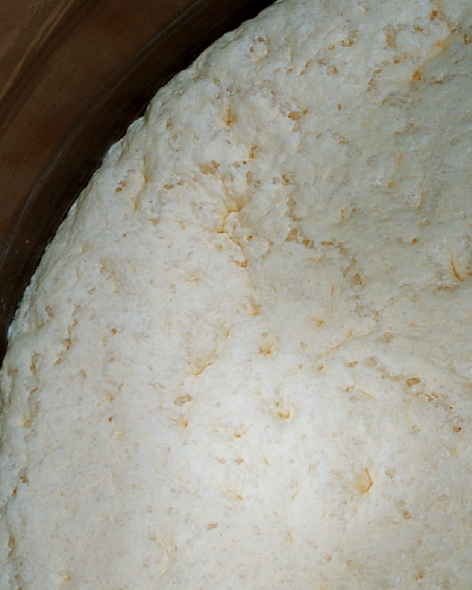
Sake brewing methods
Kimoto
The kimoto method is a traditional method of brewing sake by skillfully utilizing the actions of yeast and lactic acid bacteria, which need great care and much time. This method can bring out the strong flavor of rice, resulting in the firm and dense texture and profound taste of sake.

Fukurozuri
Fukurozuri is the method of hanging a bag containing moromi and carefully collecting drips that naturally fall from it. This method requires very great care because natural gravity alone is used to collect sake drips. Since the method cannot produce a large amount of sake at a time, it is used only to brew special sake. Sake filtered slowly and carefully tastes and smells elegant.

Ki-ippon
Ki-ippon is junmai sake that is brewed and finished as a product at a single brewery.
Muroka
Muroka sake is non-micro-filtered sake, which features the strong flavor of rice. Due to difficulty in managing its quality, muroka sake used to be enjoyed only on the spot at breweries. However, it has recently been appearing in the market. Compared with micro-filtered sake, muroka sake is characterized by a unique sharp taste and flavor, which you can fully enjoy by having it chilled or on the rocks.
Genshu
Genshu is undiluted sake, as it is when it is brewed. While sake generally contains about 15% alcohol, genshu mostly has a higher alcohol content of about 20%. It features a firm mouthfeel, as well as a concentrated rich aroma and flavor essential to sake. Using it as a cocktail base is a recommendable way to fully enjoy its dense flavor and sour taste, which are unique to sake.
Nama
Nama sake is sake shipped raw without undergoing the heating process. Because it is raw, it features a refreshing, crisp, and fresh flavor. This freshly brewed sake has a distinctive aroma and flavor. It tastes even fresher when it is chilled.
Nama Chozo
Nama-chozo sake is sake that is heated once before being shipped. This kind of sake is characterized by a refreshing mouthfeel and an exhilarating fresh flavor. Since it is stored raw for a longer time than nama sake, it also features the mellow flavor of rice. It tastes even more refreshing when it is served on the rocks.

Types of Sake
Premium Sake Grades Meaning
The premium sake grades are awarded to sake that meets prescribed requirements concerning the quality of brown rice as an ingredient, the rice polishing ratio, the amount of the brewer’s alcohol used, etc.
* Premium sake grades: Ginjo; daiginjo; junmai; junmai ginjo; junmai daiginjo; tokubetsu junmai; honjozo; tokubetsu honjozo
Junmai
Junmai sake is made only with rice, rice koji, and water, without the brewer’s alcohol added. It features the natural flavor and aroma of rice, as well as a full body originating from rice, and nicely matches various dishes.
Tokubetsu Junmai
Tokubetsu junmai sake is junmai sake that is made using rice grains polished to 60% or lower of their original sizes or made with a special brewing method. Its aroma and flavor vary depending on the rice polishing ratio or the brewing method.
Junmai Ginjo
Junmai ginjo sake is made of the same kinds of ingredients as junmai sake, but the rice grains used to make the former are polished to 60% or lower of their original sizes. It is made with the ginjo-zukuri method, whereby well-polished rice is fermented at a low temperature for a long time. Junmai ginjo sake features a fruity aroma called “ginjo-ka,” as well as qualities unique to junmai sake varieties, including the flavor and sweet taste of rice and a full body originating from rice. It nicely complements various dishes.
Junmai Daiginjo
Junmai daiginjo sake is the same as junmai ginjo sake in terms of the kinds of ingredients and the use of the ginjo-zukuri method. However, the rice grains used to make the former are polished to 50% or lower of their original sizes. It is a luxury sake made using rice grains carefully polished to half or less of their original sizes. Junmai daiginjo sake features a more gorgeous ginjo-ka (fruity aroma) than that of junmai ginjo sake, as well as a clear mouthfeel despite the flavor and sweet taste of rice and a full body originating from rice.
Ginjo
Ginjo sake is made of rice, rice koji , water, and the brewer’s alcohol. The rice grains used to make it are polished to 60% or lower of their original sizes. It is made with the ginjo-zukuri method, whereby well-polished rice is fermented at a low temperature for a long time. It features a gorgeous fruity aroma called “ginjo-ka.”
Daiginjo
Daiginjo sake is the same as ginjo sake in terms of the kinds of ingredients and the use of the ginjo-zukuri method. However, the rice grains used to make the former are polished to 50% or lower of their original sizes. It is a luxury sake made using rice grains carefully polished to half or less of their original sizes. It features a stronger, gorgeous fruity aroma called “ginjo-ka” than that of ginjo sake, as well as a clear flavor.
Honjozo
Honjozo sake is made of rice, rice koji, water, and the brewer’s alcohol. The rice grains used to make it are polished to 70% or lower of their original sizes. The brewer’s alcohol works to create the well-balanced flavor of this kind of sake. Honjozo sake features a refreshing mouthfeel in a good combination of richness and lightness.
Tokubetsu Honjozo
Tokubetsu honjozo sake is honjozo sake that is made using rice grains polished to 60% or lower of their original sizes or made with a special brewing method. Better-polished rice or the special brewing method makes tokubetsu honjozo sake taste more delicate than honjozo sake.



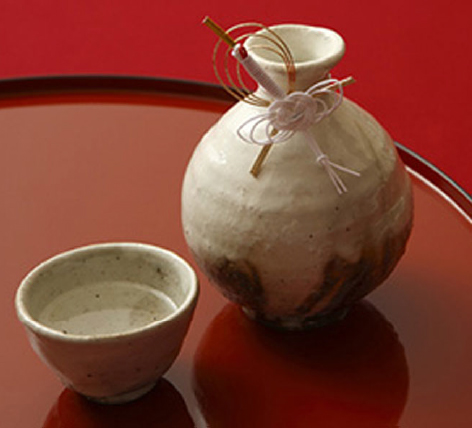
| Type | Premium Sake Grades | Ingredients | Rice Polishing Ratio |
|---|---|---|---|
| Junmai | Junmai | Rice,rice koji | No requirement imposed |
| Tokubetsu Junmai | Rice,rice koji | 60% or less OR Specially brewing method | |
| Junmai Ginjo | Rice,rice koji | 60% or less | |
| Junmai Daiginjo | Rice,rice koji | 50% or less | |
| Ginjo | Ginjo | Rice,rice koji,brewer's alchohol | 60% or less |
| Daiginjo | Rice,rice koji,brewer's alchohol | 50% or less | |
| Honjozo | Honjozo | Rice,rice koji,brewer's alchohol | 70% or less |
| Tokubetsu Honjozo | Rice,rice koji,brewer's alchohol | 60% or less OR Specially brewing method |
About Brewer's alchohol
The brewer’s alcohol is highly pure alcohol added in the process of making ginjo, honjozo, and ungraded sake. It works to bring out the light flavor and aroma of sake.
How to enjoy Sake
The sake serving temperature range
Sake smells and tastes different according to the serving temperature. Some sake taste better when warmed, while others taste better when chilled. At warm temperatures, the aroma and flavor of sake become more prominent. Meanwhile, at cold temperatures, sake feels clear and refreshing in the mouth and becomes easier to drink. The appeal of sake lies in the possibility of enjoying it at various temperatures, warm or cold, according to your mood, the setting or the season. In Japan, there is a culture of enjoying sake in various ways according to the season or the type of cuisine.
| (℃) | (℉) | Name | Meaning |
|---|---|---|---|
| 55 | 131 | Tobikiri-kan | top warm |
| 50 | 122 | Atsu-kan | very warm |
| 45 | 113 | Jo-kan | warm |
| 40 | 104 | Nuru-kan | lukewarm |
| 35 | 95 | Hitohada-kan | skin warm |
| 30 | 86 | Hinata-kan | sunspot warm |
| 25 | 77 | Shitsu-on | room temperatures |
| 20 | 68 | ||
| 15 | 59 | Suzu-hie | cool |
| 10 | 50 | Hana-hie | chilled |
| 5 | 41 | Yuki-hie | very chilled |


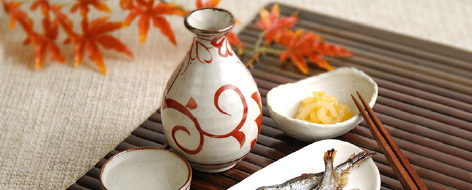
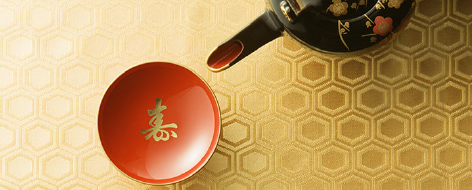
Customs related to sake
Kagami-biraki
In Japan, the round, flat lids of sake casks have been called “kagami” (“mirrors”) since olden times. Therefore, the custom of many people coming together to break the lid of a sake cask and savor sake is called “kagami-biraki” (literally “opening a mirror”). Since kagami-biraki or “opening a mirror” is an auspicious act associated with “opening up a path to good fortune,” this custom is still practiced on various occasions.

New Year custom
Since ancient times, Japanese people have handed down the New Year custom of offering sake to deities to express their gratitude for the arrival of the New Year and pray for their own good health during the year and then having the sake offered to the deities together with various dishes.



